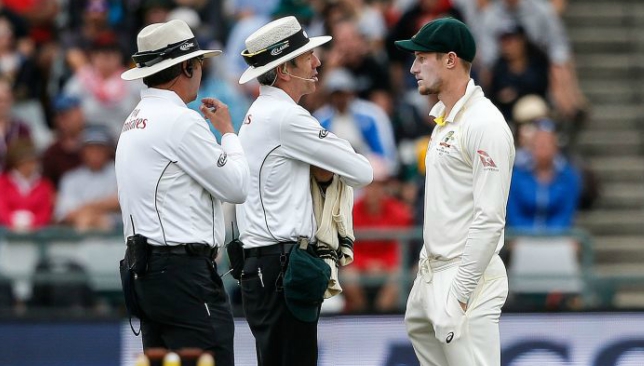
Every team indulges in ball-tampering. Let’s get that bit clear.
Ever since Pakistan’s iconic fast bowlers mastered the deadly art of reverse swing in the 1980s, teams across the planet have been on the lookout for ingenious ways to ‘shine’ and ‘maintain’ the ball once it gets old in Test cricket. Some methods like applying saliva on the ball are allowed by the ICC while others like scratching the ball while cleaning it need constant monitoring to be detected.
Even so, every team tries its best to ‘make’ the old ball so that it starts to tail in and brings the fast bowlers into the picture on wickets that are not helpful.
Having said that, an attempt as blatant as the one carried out by Australia in Cape Town can’t go unpunished as captain Steve Smith admitted it was a deliberate ploy by the ‘leadership group’ to alter the condition of the ball.
The International Cricket Council has its own set of rules for ball-tampering and will hand out punishments accordingly. But the spotlight now is on Cricket Australia. Can they have a player or group that has admitted to cheating lead the team? The answer is no.

Sachin Tendulkar, Faf du Plessis and other players accused of ball-tampering in Test cricket
Here is something interesting. If Smith has to be replaced......Warner can't be made captain and in batting order, Bancroft can't, Khawaja can't, Marsh and Marsh can't, the bowlers are constantly fighting fitness worries.....Paine? Looking grim!
— Harsha Bhogle (@bhogleharsha) March 24, 2018
It’s the job of professional athletes to do whatever they can to win matches for their country. Sometimes they push the limits of what is permissible to extract those extra percentages that can be the difference between winning and losing. But even then, there are certain acts that are just too flagrant to be brushed under the carpet.
Cameron Bancroft was caught on camera hiding the piece of tape he used to scruff up the ball. It became clear that Bancroft was acting upon instructions from senior management and after the day’s play at Newlands, Smith admitted the ‘leadership group’ was involved. He refused to name names but players like David Warner and Mitchell Starc would be a part of that group.
What is of equal significance is the role of coach Darren Lehmann. Smith said the coach wasn’t involved but the same ball-tampering footage showed Lehmann on a walky-talky along with substitute fielder Peter Handscomb who was then seen on the field talking to Bancroft who later shoved the item – sticky tape – inside his underpants.
So here we have a leadership group that has been caught cheating and forced to admit it. Cricket Australia, unfortunately, doesn’t have any option but to sack Smith from his position. No team can afford to be led by a player who has cheated and admitted to doing so following discussions with other decision-makers.
Best video of the whole Cameron Bancroft incident. Long and detailed, and it looks very damaging not just for Bancroft but for Darren Lehmann to some extent too. #SAvsAUS https://t.co/79qFFwcAm7
— Saurabh Somani (@saurabh_42) March 24, 2018
This also shows the Australian management in a bad light. Remember the Smith ‘brain fade’ in India when he was caught on camera asking for the dressing room’s opinion on an lbw referral during the Bengaluru Test in 2016? Smith had said that was not a team tactic, just as the Cape Town incident was a one-off.
But how long can the Australian board afford such brain fades? This Australian leadership group has now been caught on video seeking dressing room’s assistance, almost coming to blows with opposition player (David Warner-Quinton de Kock saga), dropping the ball on a batsman after he was dismissed (Nathan Lyon on AB de Villiers) and now collectively and deliberately tampering with the condition of the ball. Heads have to roll if Australian cricket wants to put this embarrassment behind them at some point in the future.
Coming back to my original point that every team does it. Yes, everyone does it but there is an art, if you can call it that, to it – and that certainly doesn’t involve roughened sticky tape. Sweet-laced saliva, hard throws into the adjoining pitches and rubbing the ball on coarse parts of a trouser are some of the more time-tested tactics that result in a ball getting ready for reverse swing while staying close to the danger line of permissible actions.
Also, every team knows that if a player is caught, then there will be a price to pay. Most teams and players, therefore, try to keep it within limits so as to not bring their team and the game to disrepute on prime time television.
And the most staggering part of what happened in Cape Town is that the Australians, at some point, thought this was a good idea and that the numerous cameras on the field wouldn’t pick it up. What were you thinking, mate?